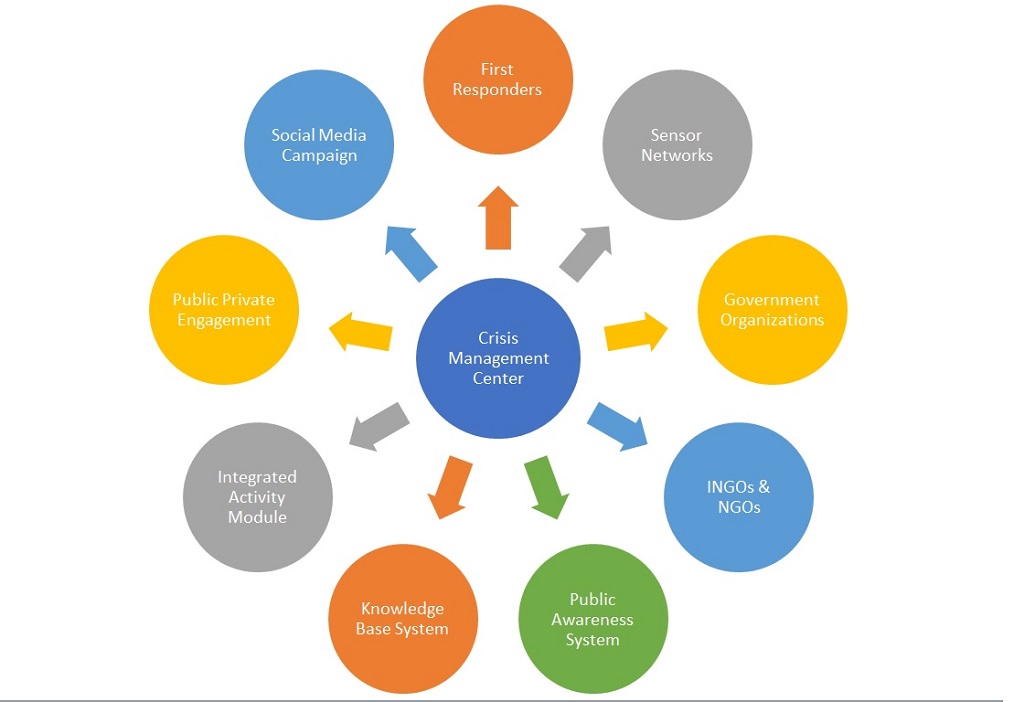
- Krishna Prasad Paudel (Knowledge Management Experts)
How does Knowledge Management help in a Crisis?
Preparedness action is carried out within the context of disaster risk management and should be based on a sound analysis of disaster risks and be well linked to early warning systems. It includes contingency planning, stockpiling of equipment and supplies, emergency services and stand-by arrangements, communications, information management and coordination arrangements, personnel training, community drills and exercises, and public education. The probability of harmful consequences, or expected losses (deaths, injuries, property, livelihoods, economic activity disrupted or environment damaged) resulting from interactions between natural or human can be mitigated through implementing a simple Knowledge Management (KM) framework.
The framework can be an effective tool to provide a high-level, strategic, unifying framework that outlines what is needed for emergency preparedness by the Government of Nepal (GoN) like the situation COVID-19. They can help to decide what to look at, what decisions to focus on, and what can be made automatically and/or in advance in the hazard situation.

Framework for Crisis Management
The figure presented below shows the integrated framework for crisis management. This framework provides the complete integration of the governmental, semi-governmental, development partners and citizen engagement to strengthening emergency preparedness in countries and communities.

The framework is supportive
to strengthen country and community emergency preparedness in order to ensure a timely, efficient and effective response to different events as well as help to advocate for prioritizing financial and other resources in community and country emergency preparedness, and mobilizing increased domestic and international support.
In this regard, Ministry of Health can use this framework to prioritize and implement important emergency preparedness actions to minimize the risk of COVID-19. This framework identifies the principles and elements of effective emergency preparedness for the government in planning process help to determine the priorities and develop the efficient operational capacities. In addition, the framework enables stakeholders to identify their roles and encourages to contribute at crisis situation. This framework contains seven components. Based on the priority and awareness for the government, it is mentioned through first responders to the social media campaign.
The First Responders is a group of health personnel’s (Doctor, Nurse etc.,), security personnel (Army, Police, etc.), volunteers (members from Red Cross, Scout), and rescue team who directly support the victim immediately and rescue them form the crisis and immediate problems.
Sensor Networks: The sensor network identifies the critical zone and area which are in high risk that need immediate support and helps from the first responders.
Government Organizations: The role of the government organization is to develop planning for readiness which includes, financial, logistics and other types of management. The Ministry of council looks for these types of planning. They also invite the International community to help in emergence.
INGO & NGOs: The INGO and NGO plays a vital role in crisis situation by providing volunteer and team of the experts to minimize the risks. The role of these institution is more beyond the helping hands.
Public Awareness System: The public awareness system provides the necessary information of in area, out area, risky zone, awareness broadcasting system via different technology such as mobile SMS, Radio, TV, social media etc.

Knowledge Base: The knowledge-base is a system which provides the necessary information regarding the working team on a particular area and location along with the need of the particular zone at the same time. The Internet, databases, groups of experts from national and international society are the components of the knowledge base.
Integrated Activities Module: This system provides the details of the information and working principles of intra ministries collaboration along with international domains. The integrated modules particularly focus on:
- How the ministries along with other institution being involved in minimizing the risks in critical situation
- How they working on the different areas and bringing different types of supports to the citizen, and
- What types of immediate help and support is needed by the citizen of critical zone?
Based on the reports and activities provided by this module the Government can take necessary activities to minimize and reduce the risk in emergence.
Public-Private Engagement: Every activities of the government demands the consent of the social and private engagement. These types of engagement are highly prioritized during the time of crisis. Through the alignment of public and private engagement they can provide necessary logistics during crisis time.
Social Media Campaign: Dissemination of the short video regarding awareness through YouTube, Facebook, LinkedIn, Twitter, and other types of social media is very useful in the situation of crisis.
The framework as explained above could be the best solution for a government to minimize the risk and make citizen award from the crisis of any events. For the case of COVID-19, the government can make preparedness to minimize the risk and increase the awareness for the citizen of Nepal to lose the human being from this cause. Not only for this situation, the Government can use this framework to other types of natural disaster situations to control the situation save the life of citizen.







प्रतिक्रिया